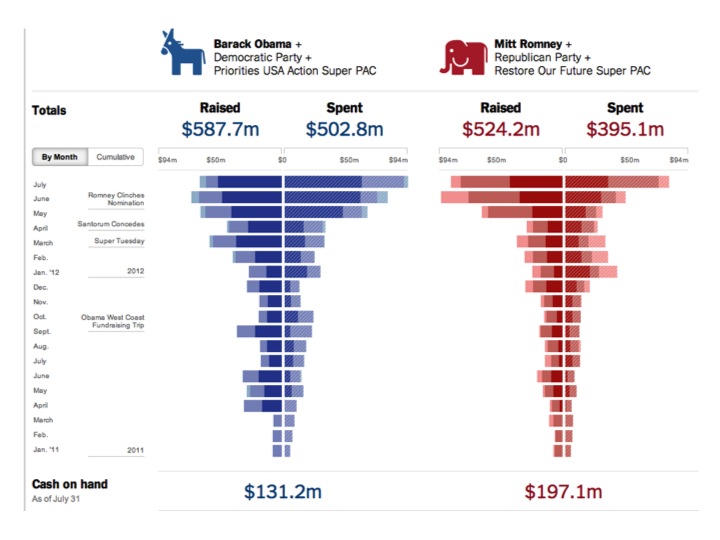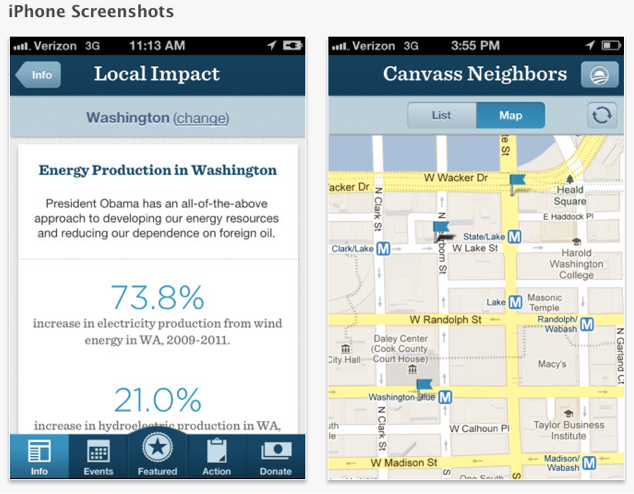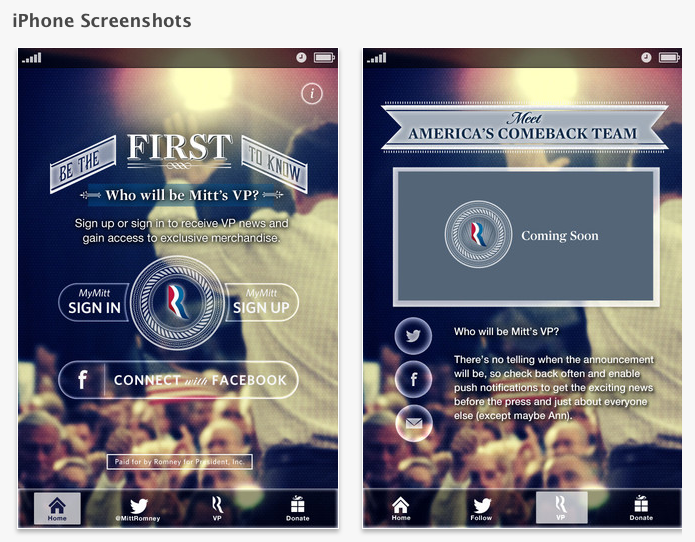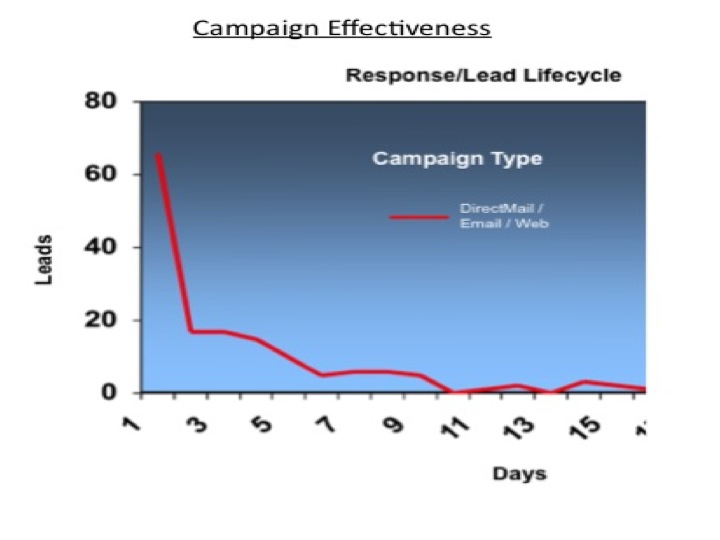by scott.gillum | Sep 21, 2012 | 2011, Marketing
This post was originally posted on July 8, 2011. It also appeared on Forbes.com
Here’s a hypothesis: Given the greater focus on ROI, marketing automation tools, and enhanced tracking of results, marketing is more of a science than ever. Therefore, marketers’ ability to defend and validate their value among peers should be easier than ever before.
So why does a recent study by Fournaise show that CMOs still lack credibility with CEOs?
The study points to several deficiencies with an emphasis on communication – are you sensing the irony? Further, marketers tend to sabotage themselves in everyday interactions with the larger executive team, and in many cases, have no idea they are doing it.
Here are five common mistakes among marketers:
- Stumble explaining the value of marketing. Asked almost daily, and rarely answered properly. The key is to understand how the inquirer perceives the role of marketing. The question behind the question is “what is the value of marketing … to me?” According to the study, it most often relates to “revenue, sales, EBITA or even market valuation.”
- Limited product, service, and customer knowledge. Even the savviest marketer will arrive DOA in the credibility department if they fall short on this one. And it is not about feature or functionality, but rather customer use and application that matter most and those factors vary by industry and size. Leave “speeds and feeds” to the product organization. Marketing’s job is to differentiate and develop compelling value propositions that sell. If products are built “inside-out,” then bring the “outside-in” perspective.
- Can’t Dance. Marketing comes with highly visible risk and things are going to go wrong. When they do, marketing needs to learn how to dance. Handling these situations will define how marketing is viewed. Keep best and worse case scenarios in mind when briefing the executive team. Truth is, if marketing isn’t making a few strategic and tactical mistakes, it’s not moving fast enough. As a former IBM client told me, “If you fail, and you will, fail fast.”
- Isolation. A favorite question from sales: What have you done for me lately? And the product team can be equally demanding. However, marketing has to build, nurture, and maintain strong relationships with these groups. For Sales, it is helpful to establish an integrated sales pipeline and hold weekly pipeline meetings; this will build rapport and create a common sense of purpose. It’s also an opportunity to put marketing metrics in a sales context. The key to a successful relationship with sales is about communication and performance. For the product group, marketing needs to clearly define points of integration for research, content, and value proposition development. The key to a successful relationship with the product team is about process and integration.
- Where to invest – or cut – an incremental dollar. This question is posed by the CFO at the end of the quarter when numbers are off, and by the CEO who wants to redirect budget. It’s also used as a test. As a holder of discretionary dollars, marketing has to be prepared to answer “where” and “why” along with stating the business impact. In talking about CMOs, 72% of CEOs say, “[marketers] are always asking for more money, but can rarely explain how much incremental business this money will generate.”
To call out the sense of irony, most of these issues are communication related. The same rigor brought to external communication needs to be applied internally:
- Know the audience
- Understand their needs
- Communicate to them in their language.
While the Fournaise study states that executives think in terms of “revenue, sales, and EBITA,” most make judgments based on their emotions. Marketers are advised to use their creativity in delivering the message.
Friedrich Nietzsche said it: “All credibility, all good conscience, all evidence of truth come only from the senses.”
by scott.gillum | Sep 7, 2012 | 2012
The 2012 Presidential election will be the most expensive in history. According to the New York Times the candidates will raise and spend over $1 billion dollars seeking office. For marketers, this election will yield a windfall of new ideas. Political campaigns are to marketing innovation what big defense budgets are to technology innovation.

2012 Campaign Spend
As the result of massive advertising budgets, high adoption rates of social media and penetration of smartphones, expect to see groundbreaking innovation in mobile advertising.
Areas to watch:
- Hyper-local targeting – the Obama campaign team has developed an app that links a Google map to the neighborhood volunteers are working. The map contains blue flags at homes to be knocked, including scripts for approaching individual voters.

- Mobile geo targeting – during a concert in Grant Park in Chicago the Romney team placed display ads on smartphones of those concertgoers and others in the vicinity. In TIME magazine recent The Wireless Edition, Patrick Ruffani, the Republican digital consultant said; “We weren’t paying for the entire city.”
- Mobile payments – the Obama team developed a new program called “Quick Donate.” Supporters can contribute repeat donations by sending the number of dollars they want to donate via a text message.
- Social Sharing – Romney’s With Mitt app allows supports to choose from a number of “With Mitt” templates to upload a photo from their phones and quickly share it on Twitter or Facebook.
- Real time data – both camps have apps to enable volunteers to report real time activities and interactions with voters. Vote Builder, the democratic voter database, ensures that no two people are sent to the same address. If a volunteer wants to canvass an area, they can click to download a list of households in their general radius. Phones prompt volunteers to report back their results so that future campaign communications, like DM, can be targeted.
- Engagement – Romney’s campaign team captured valuable information from supporters who downloaded the Mitt’s VP app. The app promised to inform supporters “first” about the vice president pick. Unfortunately, the news media beat them to it, but it will allow Romney’s team to push notifications throughout the campaign to supporter’s smartphones.

With less than 10 weeks remaining in a tightly contested election expect more innovations to come. With over 160 million Americans on Facebook and 53% of mobile phone owners having smartphones today, mobile digital campaigning is changing the way political strategists are engaging audiences and investing advertising dollars.
For marketers, it’s mobile marketing R&D that we could never afford, and will bear fruit for new ideas and campaigns for years to come. Regardless of who wins the election, the real winners from this year’s campaign will be the folks without the billion dollar-marketing budget.
by scott.gillum | Aug 28, 2012 | 2010, Sales
Originally posted on August 11, 2010
Social Relationship Management and Social CRM are terms that are now being thrown around for new technology platforms that are enabling multichannel execution. Companies like Lithium Technologies have created platforms that allow companies to run hosted communities, listen across a variety of social media channels, and manage content to and from social networks in one integrate tool.
While marketing has steadily evolved from “one to many”, to “one to one“, Social CRM is now creating the opportunity for “many to one.” For example, a customer tweets a question about a product (e.g. is it worth the money) on Twitter, a customer advocate brings that comment into the company’s online forum. Customers response to the question by sharing their experiences with the product, those comments (most likely only the positive ones) are then tweeted by the company to promote the product.
The promise of Web 2.0 has always been about customers selling to customers. New Social CRM tools are now enabling that by consolidating platforms. But this has the potential to raise issues over who gets credit for the sale. If the true ROI on social media is revenue, which many research studies are now suggesting, then who should gets credit for a sale closed by a customer advocate?
Customer references and testimonials have always been critical for closing deals. What happens when customer advocates volunteer their support for the brand and/or endorsement of a product? Does marketing get credit for providing platforms for enabling customer advocates? And what about the customer/s who’s comments help push the prospect over the goal line…do they need to be rewarded, and if so?
One thing is certain: social media is blurring the line between sales and marketing interactions and dialogues. Given that, we may have to rethink our traditional views of customer coverage and relationship management. Perhaps in the future, marketing will be responsible for managing customers online relationships, and sales for the offline experience.
Someone call HR and give them the heads up. Territory planning, revenue crediting, roles and responsibilities might need a refresh soon.
by scott.gillum | Aug 20, 2012 | 2012, Marketing
Everybody knows – or thinks they know intuitively – that social elements add value to marketing. The question is how?
Like anything in business, it comes down to return on investment. Social media is not a strategy and it’s not an end in itself. Unless your business objective (and I’d check with your shareholders on this) is only about gaining page views and follows, marketers need to understand how social adds value to everything else in your toolkit.
So how do you find the “sweetspot” for developing an ROI for social media? Well, start by viewing the tools at their most basic level, as vehicles for sharing and; photo’s, thoughts, content, etc. Consider them “levers” for improving the performance of known activities that have produced a ROI.
Five years ago, we assessed the effectiveness of demand generation campaigns for a client. Because the firm was in the hi-tech industry they had a heavily reliance on content marketing for their campaigns. They spent months designing and building them, and hundreds of thousands of dollars in execution only to see diminishing results.
The audit revealed that their campaign effectiveness (related to lead production) lasted roughly 36 hours after launch (see below). Meaning that the majority of the leads were being created within the first three days of launch, regardless of how long they left the campaign in the market (btw – they are not alone).

Today, social media has the potential to create a long tail, extending the life of expensive campaigns, ultimately improving ROI, and along the way creating and deepening the relationship with the audience.
I’ll use myself as an example: A blog post of entitled The End of Blogs (and Websites) as We Know Them ran recently in on Forbes. It received no special promotion; in fact, you could say the deck was stacked against it. Posted on a Friday, the slowest traffic day of the workweek, at midnight (EST) when most of the blog readers at home or are in bed. By prime blog viewing time (10 am) it had almost dipped below the fold.
But on the following Monday it took off, almost doubling the views of Friday, and continued to build momentum ending the week as the 3rd most popular post of the day. The following week it was the most popular post on Wednesday. So what happened?
Social took over. Without any additional investment to promote the post, social sharing accelerated and extended the life of the post, even as it fell off the first, second and third page of the site. Readers engaged and went from passive viewers to active promoters.
Readers were tweeting their own thoughts and comments about their insights, not just retweeting the post title. They placed in into Linkedin groups adding their comments on the impact of the technology (the topic of the post) to their particular area of interest or role. They were actively engaging in sharing their “discover” with others.
 That is the power and the value of social media for content marketing.
That is the power and the value of social media for content marketing.
The post no longer needed to be pushed because it was being endorsed, and in some ways validated, by readers — the most trusted source of information.
The potential of social media is intriguing, but to determine its true value companies will need to experiment. Using social media to support your content marketing efforts is a prudent choice, but keep this in mind: It will only be effective if the audience/community finds value in the content and part of that value is defined by those who pass it along.
by scott.gillum | Aug 13, 2012 | 2012, Observations
Big data is about to get bigger. Deliotte predicts that by the end of 2012 more than 90 percent of the Fortune 500 will likely have at least some Big Data initiatives under way. Companies will likely spend $1-1.5 billion to enable their organization to collect, analysis and use “big data” with the intent of gaining a better understanding their customers. But according to Doc Searls author of the new book Intention Economy: When Customers Take Charge that may be a waste of money.
Searls points out in a recent article in the Wall Street Journal, that as fast as companies are configuring systems to capture data at customer touchpoints, consumers are disabling collection sites. In May of this year, ClarityRay reported that the overall rate of ad blocking in the U.S. was 9.26%, and even higher on certain types of site and browser (download the report on ClarityRay’s website).
In May, Microsoft announced that the “Do Not Track” (DNT) feature will be turned on by default in the next version of Internet Explorer. Add this to Dish’s ad skipping product, Hopper and you have an increasingly less assessable consumer. What does this mean, well according to Searls it’s leading to a point where the supply side will yield influence, and ultimately power to the demand side, the consumer.
Searls book explores how customers will transact over the next 10 years, and the rise of Vendor Relationship Management (VRM), think CRM built for consumers to aggregate personal information and signal their intention to vendors on their preference, terms and desired price. As Searls points out, sites like Priceline and Travelocity, have started this movement but they are still “siloed.”
The tipping point for the next wave is fully empowered consumer, untethered by restrictive contracts, and siloed information. In this new world, consumers will have software that can integrate apps with the services offered by companies, saving time for consumers and creating commerce for companies in real time.
Imagine a business trip in which your phone apps for travel, budgeting, mapping, all work together to compare offers, make reservations, and filling out expense reports along the way.
What will it take to enable this revolution? Ultimately, it comes down to the recognition that a free customer is more valuable than captive one. Companies who will thrive will identify opportunities that take advantage of consumer’s freedom that they have, or want. A mindshift from thinking of consumers as “targets” that live in “populations” who need to be “acquired” or “locked in.” To an empowered individual buyer who will signal their intent to a company, as long as there is a trusted relationship.
In this personal empowerment revolution outlined by Searls, the future of buying lies not in investing in big data systems to figure out consumers, but rather by integrating apps that enable “small data” to be used by consumers.
Big changes for big data are looming on the horizon…











